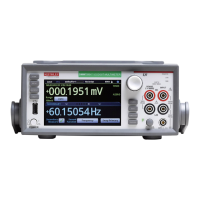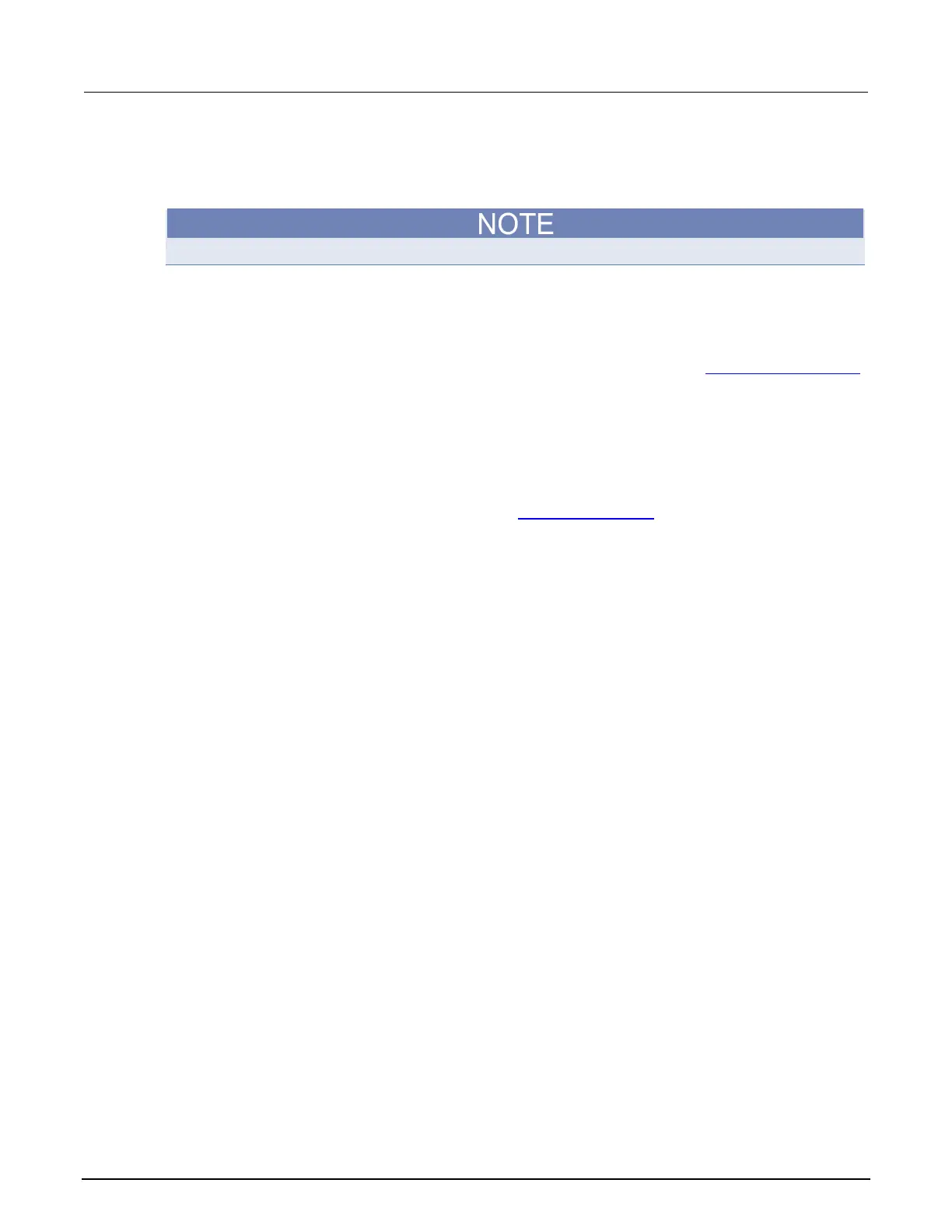3: Functions and features Model DMM7510 7½ Digit Graphical Sampling Multimeter
3-18 DMM7510-901-01 Rev. B / May 2015
Setting reading buffer capacity
The capacity of a reading buffer determines how many readings the buffer holds. You can change the
capacity of reading buffers.
Stored readings and statistics are deleted when you change the capacity of a buffer.
For user-defined buffers, you assign a capacity when you create the reading buffer. For default
buffers (defbuffer1 and defbuffer2), the initial buffer size is 100,000 readings.
The buffer style you choose when you create the reading buffer affects the capacity of the reading
buffer; use the compact buffer style to store more readings with lower resolution and less reading
information. For more information about buffer styles and their capacities, see Setting the buffer style
(on page 3-20).
The buffer fill mode you select also affects the capacity of the reading buffer. For example, If the
reading buffer fill mode is set to fill once, when the buffer reaches capacity, no more readings are
made and event code 4915, "Attempting to store past capacity of reading buffer" is displayed. If a
buffer that is set to fill once is partially filled and a new reading count is set that exceeds the
remaining capacity of the buffer, the new reading count is lowered so that the capacity is not
exceeded. For more information on fill modes, see Setting the fill mode (on page 3-21
).
The capacity of a new reading buffer is affected by the capacity of all other buffers defined in the
instrument. All buffers in the instrument share a finite amount of space; the total capacity of those
buffers combined defines the remaining space that can be allocated to a new buffer. If you try to
define a buffer that uses more space than the remaining space to be allocated, you will receive an
event message. If this happens, try defining a smaller capacity for the buffer.
To increase the amount of space available for buffers, delete user-defined reading buffers that you
are not using or reduce the capacity of existing reading buffers. Remember that if you do this, existing
data in the buffer you change will be cleared. Power cycling the instrument deletes all user-defined
buffers in the instrument.
The following topics describe how to set the reading buffer capacity.

